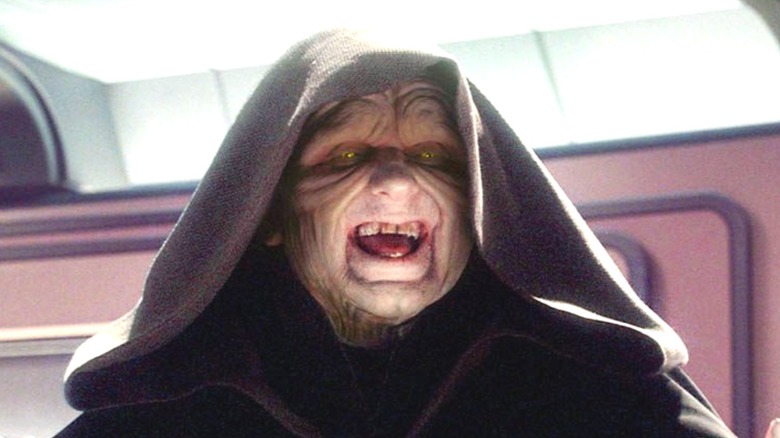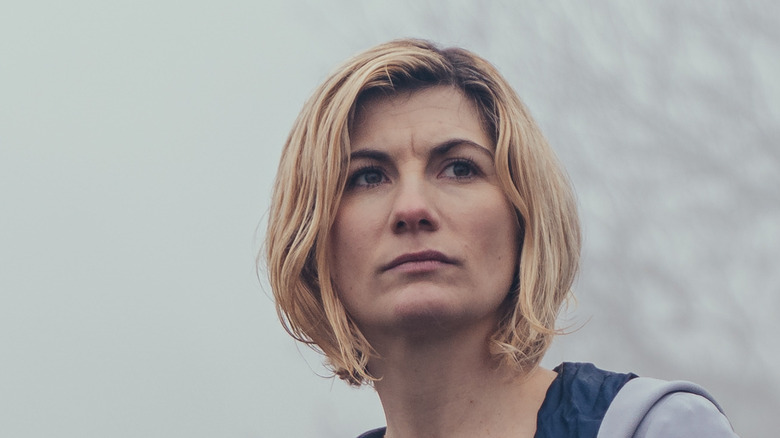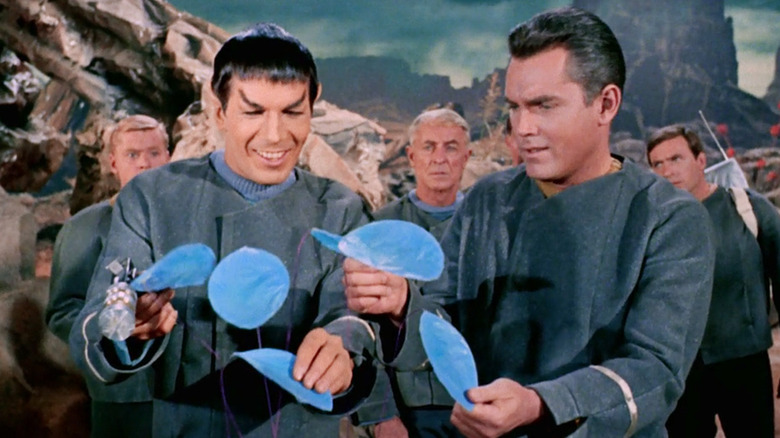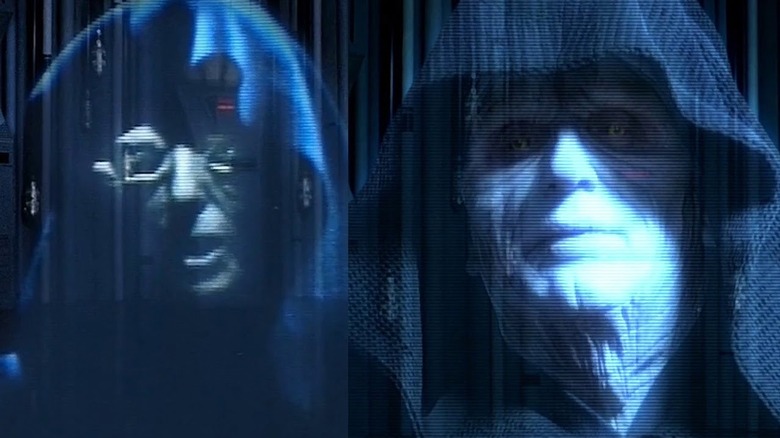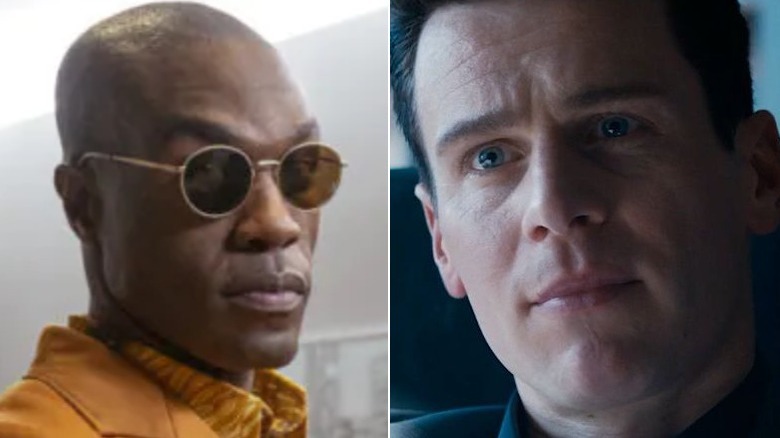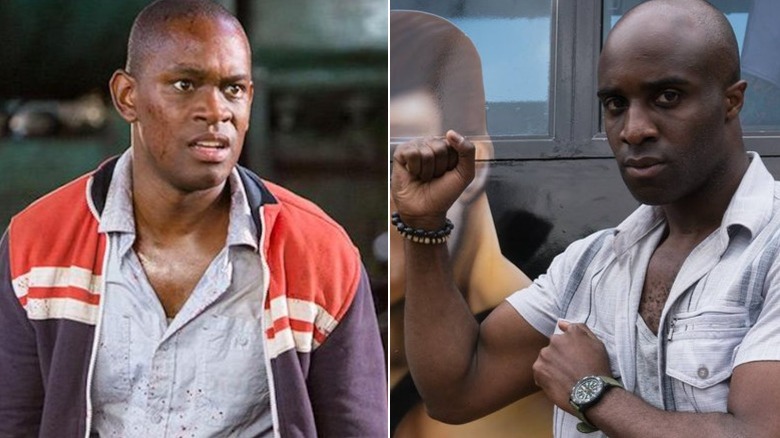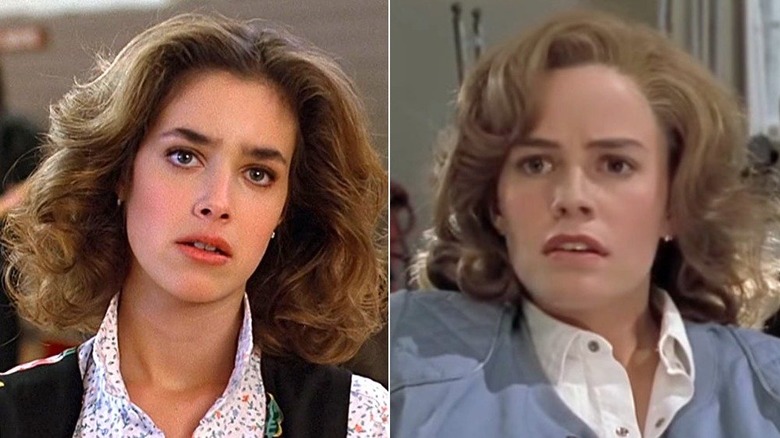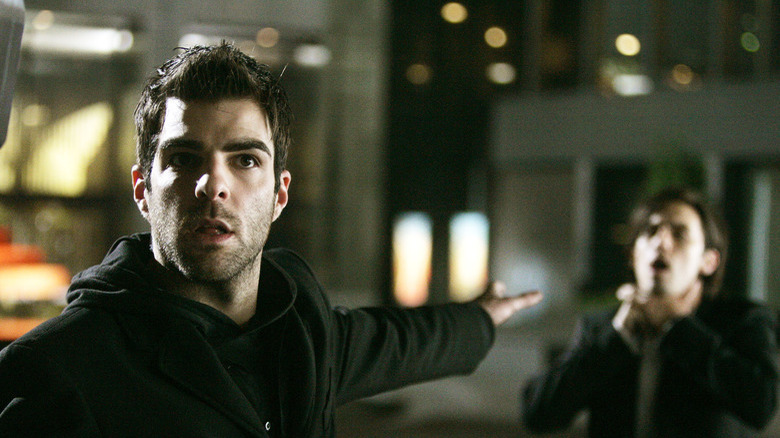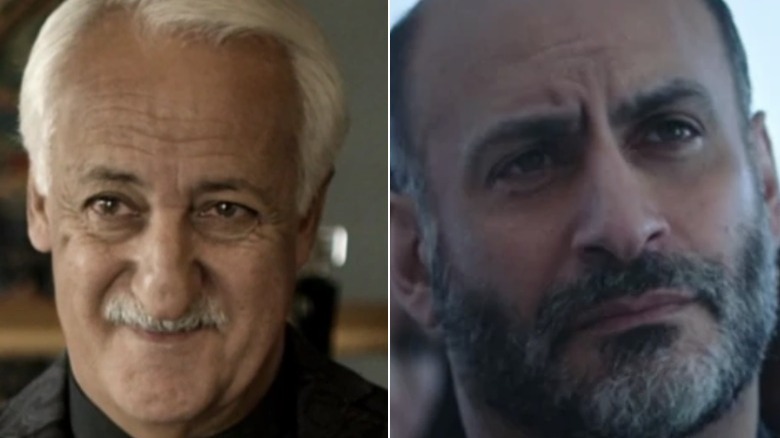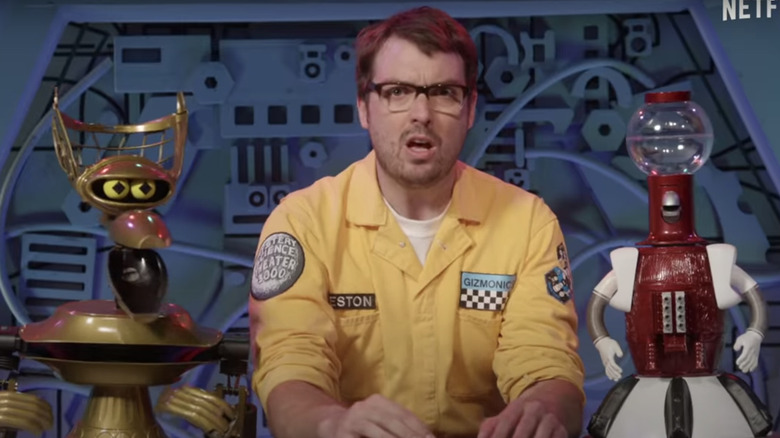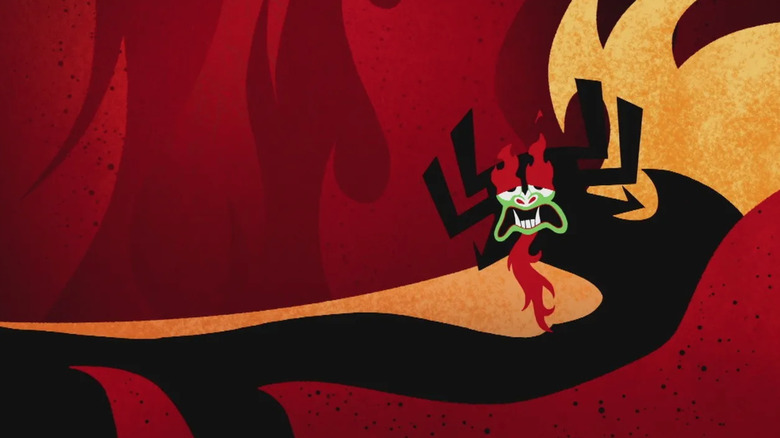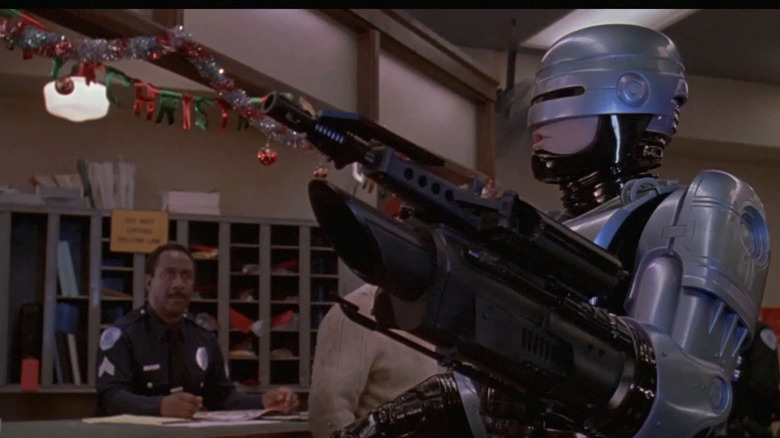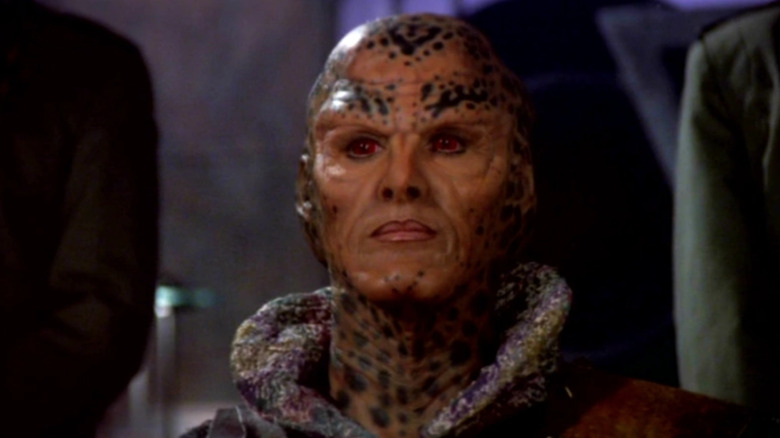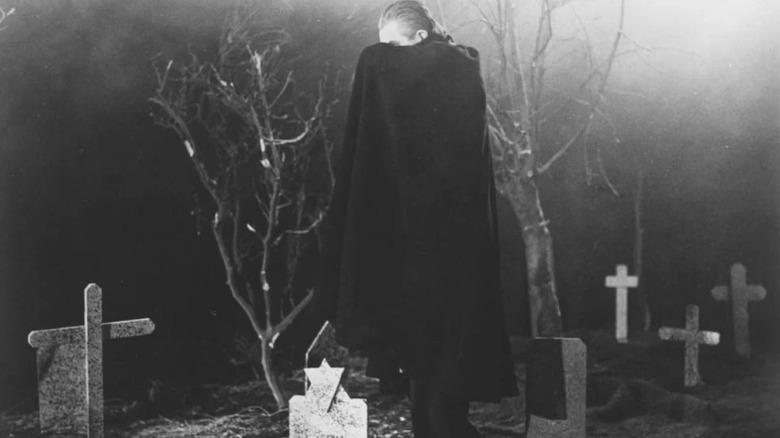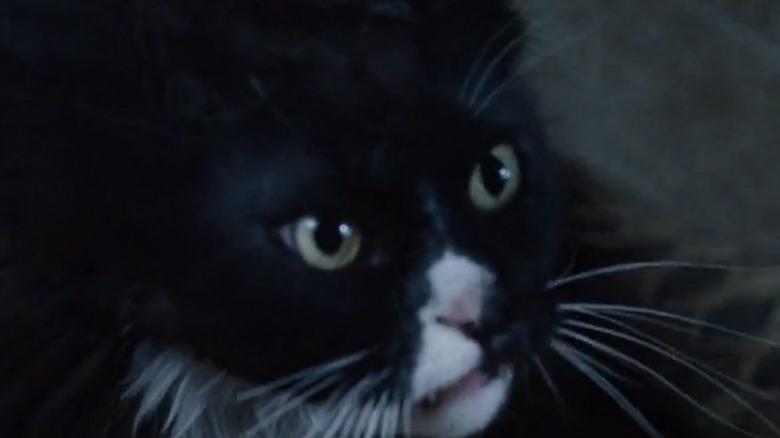The Real Reasons These Sci-Fi Roles Were Recast
Recasting is an issue many ongoing movie and television series have to deal with. The creativity allowed within the science-fiction genre can be a source of clever solutions to such casting conundrums: A character's sudden change in appearance could be worked into the story, or the mediums of prosthetic makeup, puppetry, or animation can allow characters to look the same when played by different actors. Not every recasting can pull this off, but at the very least, science fiction allows for more generous suspension of disbelief when behind-the-scenes issues result in visible changes.
Producers might need to recast certain roles for a variety of reasons, from creative differences or scheduling conflicts to personal tragedies or actors passing away. Whether these replacements were handled successfully or not is in the eye of the beholder. One thing is certain, though: Every science fiction fan is sure to have encountered some recastings in their viewings. Here are some of the most notable.
Regeneration keeps Doctor Who going
Perhaps the most famous case of continual recasting in all of science fiction, The Doctor from "Doctor Who" is able to regenerate into new forms whenever they are on the brink of death. Each new regeneration has a slightly different personality, from William Hartnell's curmudgeonly First Doctor to Jodie Whittaker's friendly-yet-secretive 13th Doctor. Allowing different actors present their own unique takes on the heroic Time Lord has allowed the BBC series to stay fresh for decades: The original series ran for 26 years, from 1963 to 1989, and the 2005 revival is still going strong.
Regeneration was not part of the original plan for "Doctor Who," but rather a creative solution to keep the popular show going when, per a BBC history, Hartnell decided to retire in 1966 due to failing health. According to the book "Doctor Who: The Sixties" by David J. Howe, Mark Stammers, and Stephen James Walker, Hartnell personally chose his successor, Patrick Troughton. Since then, different Doctors have come and gone for various reasons, typically due to changing creative teams behind the scenes or a personal desire to move on. The Doctor's arch-nemesis The Master, first played by Roger Delgado from 1971-1973, has also experienced multiple regenerations over the years.
Star Trek reshot its pilot with different actors
Watching the 1965 "Star Trek" pilot episode "The Cage" today is a strange experience for fans who've come to know and love the familiar crew of the USS Enterprise. Aside from Leonard Nimoy's Spock, "The Cage" has a completely different cast of characters. Instead of William Shatner as Captain Kirk, for instance, actor Jeffrey Hunter plays protagonist Captain Pike. Pike's first officer isn't Spock, but rather a woman named Number One played by Majel Barrett (who would go on to play different characters in "Star Trek," and to marry creator Gene Roddenberry).
Jeffrey Hunter departed after shooting the episode; theories abound as to why, though in his book, "Star Trek Memories," Shatner claims he was fired because his wife became too involved in the negotiations over his contract. After he left, NBC wanted to redo the entire pilot with a different cast of characters. Roddenberry fought to keep Spock in the show, despite concerns the pointy-eared alien might be seen as "satanic." Pike and Number One weren't discarded from the "Star Trek" canon, however; the two-part "Star Trek" story "The Menagerie" repurposed footage from "The Cage" and set the pilot characters as an earlier Enterprise crew, allowing Pike to return as a character in "Star Trek: Discovery."
Palpatine was reworked between Star Wars films
People who grew up with the various "Special Edition" releases of the original "Star Wars" trilogy since 1997 might not be aware that the original theatrical cut of "The Empire Strikes Back" featured different actors in the role of Emperor Palpatine than Ian McDiarmid. According to Heavy, when Palpatine first appeared as a hologram, he was voiced by Clive Revill and physically performed by Marjorie Eaton under heavy makeup, and with superimposed chimpanzee eyes. Obviously, such compositing wouldn't work when it came time for Palpatine to appear onscreen as a full-fledged character, so McDiarmid was enlisted to take on the role.
Eventually, George Lucas Inserted McDiarmid's more familiar version of the Emperor into "The Empire Strikes Back" as one of many changes he made for the 2004 DVD release of the original "Star Wars" trilogy.
The Matrix rebooted actors for multiple reasons
The fact that "The Matrix" movies take place in a regularly reworked computer program offers an easy in-universe explanation for why characters might suddenly look different, something which has occurred multiple times due to recasting. The first such recast occurred between "The Matrix Reloaded" and "The Matrix Revolutions," when Gloria Foster, who played The Oracle in the first two movies, passed away. Mary Alice took over the role.
"The Matrix Resurrections" featured two major recastings: Yahya Abdul-Mateen II replaced Laurence Fishburne as Morpheus, and Jonathan Groff stepped in for Hugo Weaving as Agent Smith. Fishburne told Vulture he was not invited back for the new movie, which makes sense given that Abdul-Mateen's Morpheus is actually a new program based on the original character, who is deceased. Weaving, in contrast, was in talks to return to The Matrix but his role was ultimately recast due to scheduling conflicts.
Sense8 recast Capheus over creative differences
"The Matrix" isn't the only series for which sci-fi auteur Lana Wachowski has had to recast major roles. Aml Ameen, who played Kenyan bus driver Capheus in the first season of the Netflix series "Sense8," was replaced by Toby Onwumere for Season 2. The official reason for the switch, as reported by Deadline, was "creative differences" between Ameen and Wachowski, though the exact details of those differences have yet to be confirmed.
In a series of since-deleted tweets (aggregated by Decider), "Sense8" star Jamie Clayton celebrated the recasting and made comments about "hate" and "intolerance" in relation to Ameen's behavior, though she shut down rumors that Ameen was transphobic. Clayton would later describe Onwumere as someone "who wouldn't have any limitations as far as the material was concerned" (via Buzzfeed News), possibly implying Onwumere was more on-board with the show's often extreme content. Capheus's changed appearance in the second season was cheekily acknowledged in its premiere episode with a crack about the character getting a new barber.
Back to the Future got its first Jennifer second
Though she was originally cast for the part, Claudia Wells almost didn't end up playing Marty's love interest Jennifer in the original "Back to the Future" due to scheduling conflicts. She was ultimately brought back when her schedule freed up to replace Melora Hardin, who, according to People, was fired for being "too tall" to play against the newly cast Michael J. Fox. Unfortunately, when the two "Back to the Future" sequels started filming, Wells had a more serious conflict: She needed to care for her mother, who was dying of cancer. Elisabeth Shue took over the role, resulting in reshoots of the final scene in "Back to the Future Part II" to include the new Jennifer.
Jennifer wasn't the only character to be recast for the "Back to the Future" sequels. Crispin Glover infamously disliked the first movie's ending, and refused to return as George McFly. "Part II" used archival footage of Glover's performance, as well as new scenes in which Jeffrey Weissman played George under heavy prosthetics, a move which led to a serious legal battle over likeness rights.
Heroes teased Sylar before Zachary Quinto was cast
This example is arguably less a case of "recasting" so much as a case of multiple different "pre-castings" before the right actor was found. Zachary Quinto didn't appear as Sylar, the superpowered serial-killer antagonist of NBC's original superhero drama "Heroes," until the eighth episode, "Seven Minutes to Midnight." He would continue to do so for the rest of the series, but because Sylar spent most of the first season hidden in shadows where viewers couldn't really see his face, it was possible to have multiple actors portray him before viewers got their first good look at the character.
When Sylar's voice is heard on an answering machine in Episode 2, "Don't Look Back," it's actually legendary voice actor Maurice LaMarche (of "Pinky and the Brain" and "Futurama" fame) speaking the words. Sylar's first shadow-obscured physical appearance, not portrayed by Zachary Quinto, is in Episode 3, "One Giant Leap."
The Expanse recast Arjun over scheduling conflicts
When "The Expanse" migrated from SyFy to Amazon Prime Video for Season 4, a few things changed: The budget increased, the content rating changed from TV-14 to TV-MA, and Chrisjen Avasarala's husband Arjun suddenly got 18 years younger. According to series staff writer Hallie Lambert, Arjun's original actor Brian Gorge had found other work during the period when "The Expanse" was temporarily canceled, and was unable to return to the show when Amazon brought it back, prompting the series to cast Michael Benyaer in the role.
The two different Arjuns don't look much alike at all, and the actors had different interpretations of the character (Gorge's was friendlier, Benyaer's more stoic). As such, this was a somewhat dramatic recast, though it was eased by the facts that Arjun barely appeared in Season 3, and Season 4 featured by far the character's most significant storyline, giving viewers plenty of time to get used to the new actor. Arjun would go on to die off-screen in Season 5.
MST3K regularly shifts hosts, voices -- and networks
With its independently produced revival on the Gizmoplex website, the B-movie-riffing comedy series "Mystery Science Theater 3000" has now gone through six different channels since it debuted in 1988. The show has also switched live-action hosts multiple times, going from Joel Hodgson to Mike Nelson to Jonah Ray and Emily Marsh. According to The AV Club, Hodgson quit hosting the show over creative conflicts with producer Jim Mallon; he would go on to produce the Netflix revival, hosted by Ray rather than Nelson, who was now doing Rifftrax.
The hosts' "robot friends" — GPC, Tom Servo, and Crow — have been voiced by different actors over the years. Trace Beaulieu, for instance, voiced Crow T. Robot up until the series' move from Comedy Central to The Sci-Fi Channel, when he left to write for "America's Funniest Home Videos" (via Wired). All three robots were recast as part of a complete overhaul for the series' Netflix revival, with Hampton Yount as Crow, Baron Vaughn as Tom Servo, and Rebecca Hanson as GPC.
Aku's voice died before Samurai Jack came back
"Samurai Jack," a hybrid of science fiction and fantasy, was canceled by Cartoon Network in 2004 after 52 episodes, with no conclusion to Jack's battle against the evil shapeshifting wizard Aku in sight. When Adult Swim brought Genndy Tartakovsky's hyper-stylized cartoon back for a 13-episode final season, the story was ultimately able to receive some closure. While continuing from the original run, "Samurai Jack" Season 5 had a few major differences: The violence was more intense, befitting the late-night time slot and older target audience, and Aku had to be recast due to original voice actor Mako passing away in 2006.
Before he died, Mako voiced Uncle Iroh in the first two seasons of Nickelodeon's "Avatar: The Last Airbender"; Greg Baldwin replaced the him in the fantasy series' third and final season, and once again offered his Mako impersonation for the revival of "Samurai Jack." His voice performance was so spot-on that it brought Mako's daughter and grandson to tears, per industry site Dot and Line.
Peter Weller hated RoboCop 2 -- and left RoboCop 3
"RoboCop," Paul Verhoeven's satirical 1988 action film starring Peter Weller as a cyborg policeman, is a classic for good reason. "RoboCop 2," the 1990 sequel directed by Irvin Kirshner, is remembered much less fondly. Weller himself was among the biggest critics of the sequel, arguing the story fell apart in the third act and telling The AV Club, "The script did not have the code, the spine, or the soul of the first one."
Weller told the Los Angeles Times (via the Deseret News) that he intended to return to the role, but a scheduling conflict made it impossible; he went on to star in "Naked Lunch." Robert John Burke was cast in the titular role in "RoboCop 3" without having seen the first two films. In an NBC interview, Burke said that after watching the first two films, he felt it was going to be a "chore" to try to live up to the quality of Weller's performance. The third installment ended up receiving even worse reviews than "RoboCop 2." Two other actors (Richard Eden and Page Fletcher) played RoboCop on TV, while Joel Kinnaman played the character in the 2014 remake, which arrived to middling response.
Na'Toth's makeup was too much in Babylon 5
The alien makeup in the '90s cult-favorite science-fiction series "Babylon 5" remains impressive to this day, but what's fun to watch was often miserable for the actors to wear. According to an interview with series actor Julie Caitlin Brown by Michelle Erica Green, multiple people dropped out of playing Narn characters in "Babylon 5" because the makeup, which took two-and-a-half hours to apply, was just too uncomfortable. Mary Wornorov, who played G'Kar's first assistant Ko'Dath, left the show because of the makeup. The series introduced a new Narn assistant character, Na'Toth, who was supposed to be played by Susan Kellerman; she quit over the claustrophobic makeup before she could even appear onscreen.
Julie Caitlin Brown took over the role of Na'Toth, playing the character for five episodes in Season 1. She did not return for Season 2, once again because the makeup was so uncomfortable. Mary Kay Adams played Na'Toth for two episodes of Season 2 before the character was killed off, but Brown ultimately returned to give the character a send-off in the Season 5 episode "A Tragedy of Telepaths."
Plan 9 from Outer Space hid its recasting -- poorly
Ed Wood's 1959 disasterpiece "Plan 9 from Outer Space" is widely regarded as one of the worst movies of all time – or one of the best "so bad it's good" movies, depending on your perspective. One of the film's many baffling elements concerns how it managed to include "Dracula" actor Bela Lugosi despite Lugosi being dead, and never actually involved in the development of "Plan 9."
Lugosi, who had been the biggest name in several of Wood's previous B-movies, had shot a couple scenes with Wood for an unmade film called "The Vampire's Tomb," according to The Dissolve. Needing a recognizable star for "Plan 9," Wood decided to reuse the footage previously shot for "The Vampire's Tomb," despite having no connection to aliens or zombies or anything to do with the ridiculous plot of "Plan 9." Lugosi's unnamed old man character is quickly killed off and brought back from the dead. Post-resurrection, he's played by chiropractor Tom Mason desperately trying to hide his lack of resemblance to Lugosi by covering his face with a cape. This absurd production was memorably dramatized in Tim Burton's 1994 biopic "Ed Wood," in which Johnny Depp played the director and Martin Landau won an Oscar for his portrayal of Lugosi.
The Hunger Games' first cat wasn't ugly enough
The first "Hunger Games" movie was mostly a success, earning solid audience reactions and becoming the third highest-grossing film of 2012, behind only "The Avengers" and "The Dark Knight Rises." However, the movie didn't get everything right — and one change which drew outrage from both the fans and author Suzanne Collins herself was the casting of Primrose Everdeen's cat Buttercup. Buttercup is described as an ugly orange cat in the books, but the first movie didn't stick to this description, casting a black-and-white cat instead.
Buttercup was recast for the 2013 sequel, "The Hunger Games: Catching Fire." Director Francis Lawrence said of the recasting, "That was a request from Nina the producer and Suzanne the author. That they thought the cat from the first movie was not the way he was described in the book. And that had annoyed a bunch of fans, and things like that. But it also just kind of bothered them that Buttercup was not a black and white cat. So I was happy to get one that felt like the Buttercup of the book." (via io9)
